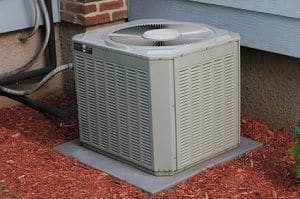Do-It-Yourself Home Energy Audits, Part 3: Inspecting HVAC Equipment
 Conducting a four-part do-it-yourself home energy audit can help you find ways to cut cooling costs and
Conducting a four-part do-it-yourself home energy audit can help you find ways to cut cooling costs and lower your energy bills this summer. Once you’ve completed the first two parts of a DIY home energy audit detecting and sealing air leaks and checking your home’s insulation you’re ready to move on to part three: inspecting your HVAC equipment.
The efficiency of your home’s air conditioning system, also known as heating, ventilation, and cooling (HVAC) equipment, plays a critical role in your ability to cool your home and maintain your comfort during hot summer days while keeping electricity bills from breaking the bank. To help your AC system run as efficiently as possible, you’ll need to inspect your equipment, check for leaks in your ductwork, and insulate your ducts.
Inspect Your HVAC Equipment
It’s important that you inspect your HVAC equipment at least once a year. Twice a year once before summer and once before winter is ideal. For a summertime checkup, you’ll want to focus on your AC system.
AC Air Filters
Checking air filters and changing them out when they’re dirty is the most important maintenance task you can perform for your AC system:
- Clogged or dirty air filters restrict normal airflow, which can make your AC system work harder to cool your home
- Dirt that bypasses an air filter can make its way to the evaporator coil where it can reduce the coil’s ability to absorb heat
- Clean air filters can lower your energy consumption by 5-15 percent
For central AC systems, air filters are generally located somewhere along the return duct. Filter locations can include walls, ceilings, furnaces, or the air conditioner itself. If you have a room air conditioner, the filter will be mounted in the grille facing into the room.
You should clean or replace your AC system’s air filters every month during the hottest summer months when you run your AC a lot and about every month or two during months in which you run your AC less frequently.
AC Coils
Your AC system’s evaporator coil and condenser coil will collect some dirt over time. Even if you change out your air filters regularly, the evaporator coil will eventually collect dirt over months and years of service. Dirt that does collect will reduce airflow and insulate the coil, which will in turn reduce the coil’s ability to absorb heat. Outside condenser coils can also become dirty over time, especially if the outdoor environment is dusty or you have a lot of foliage around your unit.
Fix problems by cleaning your evaporator coil once a year before peak summer months and keeping dirt and debris near your condenser coil to a minimum. For best results, keep the area around the condenser coil clear of debris and trim the foliage back at least 2 feet to allow for adequate airflow.
Coil Fins
The aluminum fins on evaporator and condenser coils can bend easily when you’re cleaning the coils, which can result in blocked airflow. Make sure to take care when cleaning your coils and consider using a fin comb (supplied by AC wholesalers) to remove dirt from the coils.
Condensate Drains
To clean your condensate drain, which can clog with dirt and debris and prevent an efficient reduction in humidity, pass a stiff wire through the unit’s drain channels. For best results, clean your condensate drains every two months.
Checking for Duct Leaks
Leaky ducts can reduce the efficiency of the airflow through your AC system and can also introduce dirt to the airflow after the air has already passed through the system’s air filters. The best way to find out if your air ducts are leaking is to inspect them for dirt streaks, especially near the seams. Dirt streaks indicate air leaks. Thankfully, you can seal them easily enough with duct mastic.
Insulating Air Ducts
Insulating air ducts is a good, affordable way to preserve cooled air as it passes through ducts, especially ducts that maneuver their way through uncooled parts of your home, like your attic. Insulated air ducts will also help maintain heated air as it passes through the ducts in the cold winter months. When insulating your air ducts, make sure to use insulation with an R-value of 6 or above.
Do-It-Yourself Home Energy Audits: Air Leaks, Insulation and Lighting
Make sure to read up on the other steps involved in a four-part DIY home energy audit:
There are four steps to a fairly comprehensive do-it-yourself home energy audit. Here are the other three parts, in case you need to review them or if you missed one earlier:
Part 3: Inspect HVAC Equipment
Sources
U.S. Department of Energy, Energy Efficiency & Renewable Energy, Do-It-Yourself Home Energy Assessments.
U.S. Department of Energy, Energy Efficiency & Renewable Energy, Maintaining Your Air Conditioner.



